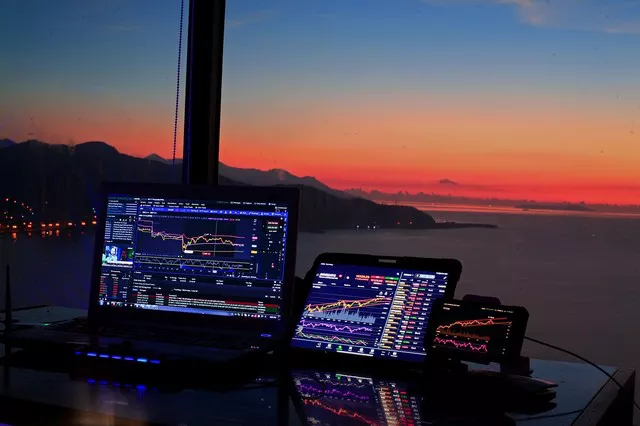Binance Futures offers traders a powerful platform to engage in derivatives trading, allowing them to speculate on the price movements of cryptocurrencies using leverage. Understanding how to trade on Binance Futures effectively involves mastering several key concepts and strategies. This article aims to provide a comprehensive guide to navigating Binance Futures, from getting started to advanced trading techniques.
Getting Started with Binance Futures
To begin trading on Binance Futures, follow these steps:
Creating a Binance Account: If you don’t already have one, sign up for a Binance account. Ensure your account is verified according to the platform’s requirements for futures trading.
Funding Your Account: Deposit funds into your Binance account. Binance supports a wide range of cryptocurrencies and fiat currencies for deposits.
Transferring Funds to Futures Wallet: Transfer funds from your Binance Spot wallet to your Futures wallet. This step is crucial as it segregates your trading funds and protects them from liquidation risks.
Understanding Contracts and Trading Pairs: Binance Futures offers a variety of trading pairs and contracts. Familiarize yourself with the available contracts, such as BTCUSDT perpetual contracts, which are denominated and settled in USDT.
Navigating the Binance Futures Interface
Once you’ve funded your account and are ready to trade, it’s essential to understand the layout and features of the Binance Futures interface:
Dashboard Overview: The dashboard provides an overview of your current positions, orders, account balance, and recent trades.
Trading Panel: This is where you can place orders. Binance Futures supports market orders, limit orders, stop-limit orders, and more advanced order types.
Charting Tools: Utilize the charting tools provided by Binance to perform technical analysis. You can customize charts with various indicators and timeframes.
Risk Management Tools: Set stop-loss and take-profit orders to manage your risk effectively. Binance Futures also offers features like “Reduce-Only” and “Close on Trigger” to refine your trading strategies.
Types of Orders on Binance Futures
Understanding the different order types available on Binance Futures is crucial for executing your trading strategies effectively:
Market Orders: Execute trades immediately at the current market price.
Limit Orders: Specify the price at which you want your order to be executed.
Stop-Limit Orders: Trigger a limit order once a specified stop price is reached.
Take-Profit Orders: Automatically close a position once it reaches a predetermined profit level.
See Also: What Do I Need to Know if I Want to Trade Futures on Binance?
Risk Management Strategies
Successful trading on Binance Futures requires robust risk management strategies:
Position Sizing: Calculate your position size based on your risk tolerance and account size. Avoid overleveraging, as it can lead to significant losses.
Use of Stop-Loss Orders: Always use stop-loss orders to limit potential losses.
Diversification: Diversify your trades across different assets and strategies to mitigate risk.
Monitoring and Adjusting: Regularly monitor your positions and adjust your stop-loss and take-profit levels as market conditions change.
Advanced Trading Strategies
Once you’ve mastered the basics, consider implementing advanced trading strategies on Binance Futures:
Scalping: Take advantage of small price movements with rapid trades.
Swing Trading: Capitalize on medium-term price trends.
Hedging: Use derivatives to offset potential losses in your spot positions.
Arbitrage: Exploit price differentials between different exchanges or trading pairs.
Leverage and Margin Trading
Binance Futures allows traders to use leverage, amplifying both potential profits and losses:
Understanding Leverage: Leverage allows traders to open positions larger than their initial margin deposit.
Leverage Risks: Higher leverage increases profit potential but also the risk of liquidation if the market moves against your position.
Calculating Margin Requirements: Binance Futures calculates margin requirements based on the chosen leverage and contract specifications.
Tax Implications and Compliance
It’s important to be aware of tax implications and regulatory compliance when trading on Binance Futures:
Tax Reporting: Keep detailed records of your trades and consult with a tax professional to understand your obligations.
Regulatory Considerations: Stay informed about regulatory developments that may impact derivatives trading in your jurisdiction.
Conclusion
Trading on Binance Futures offers significant opportunities for profit, but it requires a solid understanding of the platform, risk management strategies, and market dynamics. By following the guidelines and strategies outlined in this article, you can approach Binance Futures trading with confidence and maximize your chances of success. Continuously educate yourself, adapt to market changes, and practice prudent risk management to thrive in the dynamic world of cryptocurrency derivatives trading.


